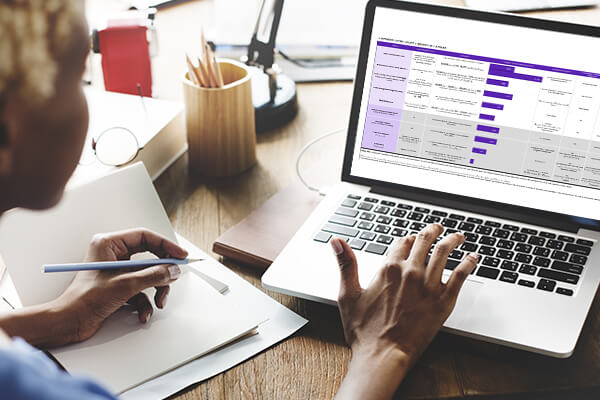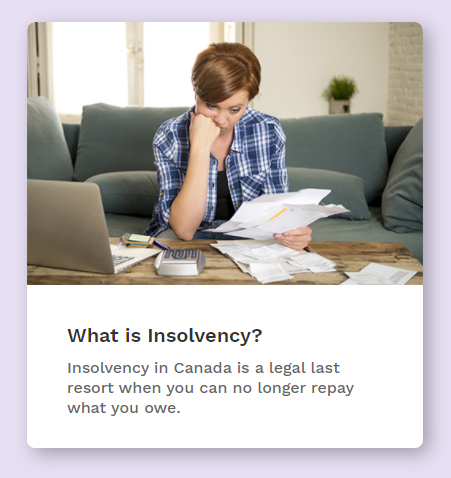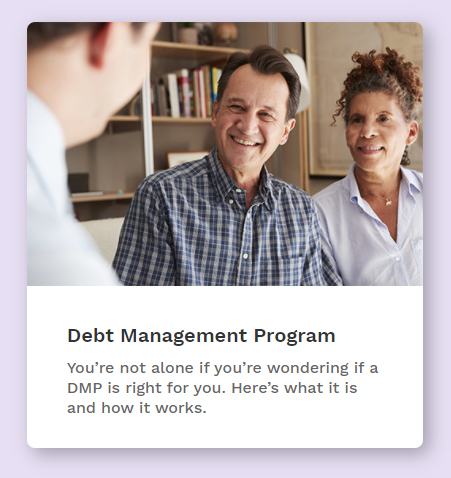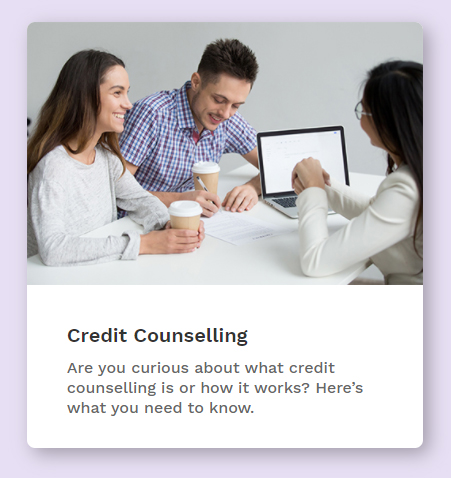Insolvency Options Compared
Consumer Proposal vs Bankruptcy – The Difference Between Them
Consumer proposal vs bankruptcy – what’s the difference between the two? A lot of Canadians are wondering – and for good reason. A lot of people are advertising consumer proposals. Sales people are pushing them. Are they as good as they sound? Is there something they’re not telling us? How does a proposal compare to good old fashioned bankruptcy? The answer is that it all depends on your financial situation. When used appropriately, both bankruptcy and a consumer proposal can be an effective form of debt relief. However, both can also have significant impacts on your life both in the short-term and long-term. We discuss below the major differences between the two, the costs of both options, their effects on your assets, the time each process takes, their impact on your credit, the long-term consequences, and how to figure out which option is best for you.
What You’ll Find Here
There are many important aspects of this discussion to consider.
Major Differences Between Consumer Proposals & Bankruptcy
Both bankruptcy and consumer proposals are governed by the Bankruptcy and Insolvency Act, directives issued to bankruptcy trustees by the Superintendent of Bankruptcy, and provincial laws. They’re intended to provide protection from the courts for people who are insolvent and unable to repay their debts in full.
Bankruptcy was originally designed to provide honest people who had fallen upon unfortunate circumstances a fresh start when they had so much debt they didn’t have any hope of repaying it.
How bankruptcy works is that if someone files for bankruptcy, all collection activity on the debts included in the bankruptcy is stopped and creditors are typically forced to accept less for the debts owed to them than the borrower originally agreed to repay.
A consumer proposal is different from bankruptcy in that your bankruptcy trustee must offer your creditors an amount of money to settle your debts and your creditors vote on the offer. If the creditors who own the majority of your debt accept it, you repay the agreed on amount over a set length of time (usually just under 5 years).
Beware of the Big Debt Rip-Off
Consumer proposals have become the latest method for a growing number of for-profit companies and their sales people to take advantage of vulnerable, unsuspecting consumers. Don’t let this happen to you! Many debt relief companies are now claiming to offer consumer proposals as an easy way to get out of debt. There’s a problem. Only a licensed bankruptcy trustee is allowed to file paperwork for a consumer proposal. The debt relief companies charge thousands in fees only to refer you to a bankruptcy trustee who then charges his or her own fees.
How to Keep from Getting Ripped Off
Follow the three tips below plus start by speaking with a member of Credit Counselling Canada, an association of non-profit credit counselling agencies who do not work on commission. If a consumer proposal is truly one of your best options, one of their agencies can let you know and refer you to a reputable bankruptcy trustee for free.
Talk to a Non-Profit Credit Counsellor
Speak with a non-profit credit counsellor about your financial situation first. They will be able to review your situation with you and help you explore and understand all your options to deal with your debt.
Only Pay a Trustee for Consumer Proposal Services
Never pay money to anyone for consumer proposal services except a licensed bankruptcy trustee. By law, only a licensed trustee is permitted to do the work and charge for consumer proposals.
Watch Out for Commission Based Debt Consultants
Ask how the person helping you is compensated. Many people who will seek to advise you on your debts work on commission. Make sure the “solution” they’re suggesting is in your best interest – not theirs.
The Costs of Bankruptcy Versus Consumer Proposals
The cost of a consumer proposal versus bankruptcy depends on a lot of factors, but here’s a general overview of what they look like:
Bankruptcy Costs
Consumer Proposal Costs
When you break it down, consumer proposals have many layers of costs. To begin with, filing a proposal costs approximately $1,500. However, trustees then keep the first 20% of your monthly payments as their administration fee. So if you file a consumer proposal for $35,000, the trustee will collect an additional $7,000 from you in fees. If you enter into a proposal through a debt consultant or company who is not licensed to file consumer proposals (here’s a list of all licensed companies), they can charge you thousands of dollars before referring you to a trustee (that you could have found for free on Google). If you have assets, that may increase the cost of your proposal too, but we’ll talk more about that below.
Another Common Cost
After you emerge from bankruptcy or finish your consumer proposal program, your credit score will be very low. To fix their credit, a lot of people are turning to credit repair companies who charge thousands of dollars for credit repair services. So for many people, this is an added cost of bankruptcy that should be considered since so many are doing it (we don’t recommend these kinds of service. We believe most people can do a good job of fixing their credit on their own for a small fraction of the cost).
Assets You May Have to Give Up or Pay For
With a consumer proposal, you technically aren’t required to give up any assets, but things aren’t always that simple. For creditors to accept the offer your trustee is proposing to them, the trustee must offer them more money than they would receive if you filed for bankruptcy.
With bankruptcy, you may of course be required to give up certain assets. What you have to give up depends on the value of your assets and the guidelines of the province you live in. Generally speaking, you’re usually allowed to keep the stuff you own in your house, a vehicle as long as it isn’t worth very much, and your home as long as you only own a small amount of equity in it. Tradespeople and farmers are also able to keep certain tools and equipment that they need to generate an income up to certain values. For more details and to find out what you would specifically have to give up, you should speak with a bankruptcy trustee.
How Much Time a Consumer Proposal Takes vs Bankruptcy
If it’s your first time going bankrupt, bankruptcy is much faster than a consumer proposal – and a lot cheaper too – if you don’t own your home (or don’t own a lot of equity in your home), don’t have a valuable car, don’t own other valuable assets, or have a high income. However, the effects of bankruptcy on your credit report usually last slightly longer. As we previously saw, the first time someone goes bankrupt, the court usually requires them to remain in bankruptcy or make payments to their creditors for 9 to 21 months. A typical consumer proposal, on the other hand, usually results in someone making payments to their creditors through their trustee for close to 5 years (you can pay it off more quickly if you can afford to).
Impact of a Consumer Proposal & Bankruptcy on Your Credit
The Story You May Not Have Heard
One of the worst things you can possibly do for your credit is to file a consumer proposal or file for bankruptcy. Both have the same effect on your credit and typically remain on your credit reports for roughly the same length of time. A consumer proposal typically takes around 5 years to pay off and then the record lasts on your credit report for another year after that. So it’s normal for a proposal to impact someone’s credit for around 6 years – even with a credit repair program. Bankruptcy payments last for 9 to 21 months. After that, the record stays on your credit report for 6 to 7 years depending on your province. So a first-time bankruptcy can impact your credit for 7 to 9 years. Click here for specific details.
People who sell proposals will usually split hairs about the difference in how a proposal is reported on your credit reports versus a bankruptcy. Technically, debts included in a proposal will report as an R7 (really bad) on your credit reports and debts included in a bankruptcy will report as an R9 (the very worst). But this is only half the story. The other half is that your credit report also displays a special warning notifying creditors that you have become insolvent and have received court ordered protection.
In the eyes of the court system, the credit reporting system, and banks, consumer proposals and bankruptcies are very close to the same thing: they are seen as insolvency. The difference in the way the two are reported on your credit report is so small that a lot of lenders can’t actually tell whether you actually filed a consumer proposal or bankruptcy. Banks and credit unions are not interested in splitting hairs to figure out the difference. To them, both mean the same thing: instead of repaying your debts as you initially agreed to, you sought court protection and only repaid a small portion of what you owed. You may have had some very good reasons for becoming insolvent, but even for the most compassionate banker will have a hard time helping you until the record of your insolvency falls off your credit report.
Obtaining credit after filing a consumer proposal or bankruptcy is a huge problem for a lot of people. There are things you can do to try and restore your credit score as quickly as possible without paying credit repair companies thousands of dollars, but until the record of your insolvency is removed from your credit reports, obtaining credit can often be challenging.
Long Term Consequences
Both consumer proposals and bankruptcy come with long term consequence that should be carefully considered before entering into either option.
Since both options involve the courts, a permanent public record is created. One place you can access this record is through a searchable online database which anyone can search for a small fee.
It’s also possible that having an insolvency on your record can affect future employment opportunities. Careers in finance, banking, security, law enforcement, and public service can be affected. For trades and occupations that require employees to be bonded, insolvency can be a reason why some insurance companies can refuse to issue a bond.
If you choose to go bankrupt, you should also know that future bankruptcies have more serious consequences than your first bankruptcy. For example, after your first bankruptcy, a record is kept on your credit report for up to 7 years. However, for subsequent bankruptcies, a record is kept for 14 years.
Alternatives to Consumer Proposals and Bankruptcy
Sometimes people end up fixated on consumer proposals and bankruptcy as though they are the only options. Depending on your situation, you could have other viable options. To have a look at all debt relief options that can be alternatives to insolvency (bankruptcy and consumer proposals), have a look at this comparison chart by clicking on the button below.
Bankruptcy vs Consumer Proposal – How to Figure Out Which Insolvency Option is Best for You
As you can see, when you look at a consumer proposal versus bankruptcy, there are definitely differences between the two, but they also have a lot in common too. What’s most important, though, is that you find the best way to get your finances back on track in a way that will help you achieve your long-term goals. Consumer proposals and bankruptcy aren’t the only ways of obtaining debt relief and consolidating debt. There’s also the Debt Management Program: a private and confidential form of debt relief that takes about the same length of time as a consumer proposal, comes off your credit report faster, and has no negative long-term side effects. There are also other ways of resolving debt problems that don’t involve an official program or paying anyone. If you honestly want to carefully and objectively look at all your options, contact a local non-profit credit counselling organization and speak with one of their credit counsellors. They’ll work with you to help you find what will work best for you – even if it is a consumer proposal or bankruptcy. Their help is usually free, non-judgmental and always confidential. You can contact any member of Credit Counselling Canada* or give us a call. Our help is always free, and we have professionally accredited credit counsellors who would be happy to help you.
*Credit Counselling Canada is the only association in Canada whose member organizations are not allowed to pay their staff any kind of financial incentive for signing people up for a program or referring them to another service provider. Credit Counselling Canada believes that this high level of integrity is critical for non-profits who serve the public in a capacity of trust since it allows the member organizations’ credit counsellors to be objective and recommend whatever is in their client’s best interest rather than what is in their own financial interest.
Find out how to get back on track
Related Topics

What is Insolvency?
Insolvency in Canada is a legal last resort when you can no longer repay what you owe.

Debt Management Program
You’re not alone if you’re wondering if a DMP is right for you. Here’s what it is and how it works.

Credit Counselling
Are you curious about what credit counselling is or how it works? Here’s what you need to know.







